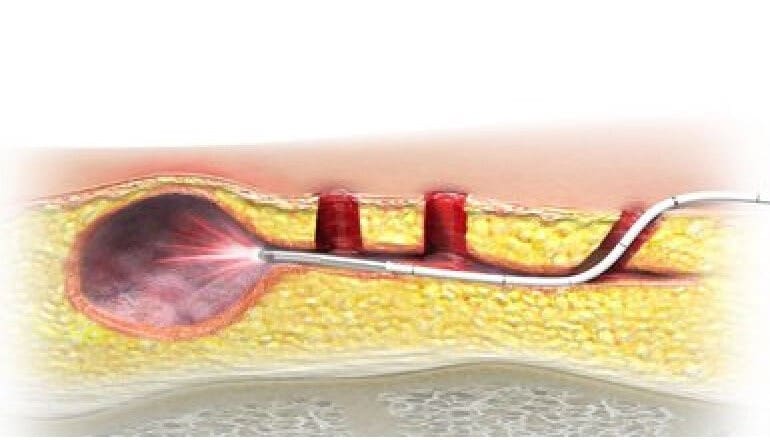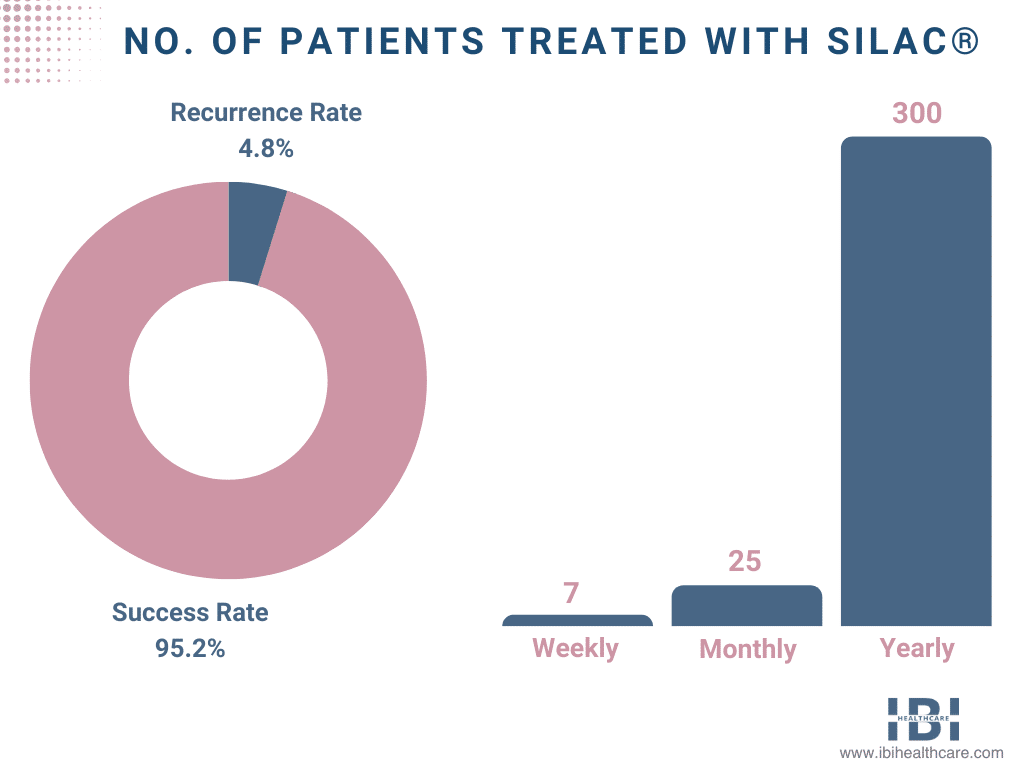SiLaC® Pilonidal Cysts
Particularly, a pilonidal cyst looks like a large pimple and forms at the bottom of the tailbone. However, if these cysts become infected, they can develop into pilonidal abscesses. On the other hand, men are more likely to experience pilonidal cysts than women and individuals who do a lot of sitting.
For instance, truck drivers, are more susceptible to pilonidal cysts. Indeed, they can be quite painful and, due to their location on the coccyx. Moreover, it can affect an individual’s quality of life. In addition, historically, the most effective form of treatment for pilonidal cysts has been to lance, drain, and remove them through surgery.
What Causes Pilonidal Cysts?
Undoubtedly, one of the most common causes of these cysts is ingrown hairs. Albeit, Sinus Pilonidalis translated from Latin literally means “hair nest”. As well as that, doctors have found hair follicles inside cysts they have surgically removed. Even so, hair follicles can get clogged by dead skin and can force hair to grow the wrong way and into the skin. Thus, it can introduce bacteria and result in an infection causing a raised pimple-like bump. Not only this but also, this bump can fill with pus and become red and painful.
Although, other conditions that can contribute to the formation of pilonidal cysts include:
- Sweating excessively.
- Trauma to that area of the body.
- Fever.
- Bloody or foul pus-like discharge.
- Excessively hairy.
- Prolonged periods of sitting.
- Intense Pain.
- Obesity.
- Raised, red, swollen pimple-like bump on coccyx near the base of the spine.
How is the diagnosis of Pilonidal Cysts made?
Clearly, doctors can diagnose pilonidal cysts through an external exam as they are visible to the naked eye. In particular, if discovered, these cysts require treatment to prevent potential problems.
Treatment for Pilonidal Cysts
It should be noted, that depending on how severe the cyst is. Without a doubt, it may require surgical intervention. Some treatments used for less serious pilonidal cysts include:
- Draining – A doctor can lance, drain, and disinfect the cyst in their office – the recovery can take about 3 weeks.
- Injections – Some mild pilonidal cysts can be treated with Injections of phenol.
- Antibiotics – Some antibiotics can help alleviate inflammation of the skin but will not treat the pilonidal cyst.
- Laser Hair Removal – Eliminating excess hair will help mitigate risks of ingrown hairs and recurrence of cysts.
- Sitz Baths – Soaking in a warm tub of water can help alleviate pain and may cause the cyst to drain.
Treatment for Severe Pilonidal Cysts
In certain instances, when pilonidal cysts become severe with abscesses and sinus cavities, surgical intervention becomes necessary. Suffering from, surgeons use various techniques to excise the cyst, diseased tissue, and sinus. Consequently, this procedure is done under general anesthesia and usually takes around 45 minutes. Above all, the recovery period can extend up to 3 months.
Non-Surgical Treatment for Pilonidal Cysts SiLaC®
First and foremost, sinus laser ablation of the pilonidal cyst SiLaC® is a minimally invasive procedure. Whereas, it uses laser ablation to eliminate coccyx fistulas or pilonidal cysts. Last but not least, the laser therapy SiLaC® is a safe and effective procedure with excellent healing, minimal wound surfaces, and impressive aesthetic outcomes.
How does SiLaC® work to treat Pilonidal Cysts?

The SiLaC® laser treatment is usually done while the patient is under general anesthesia. It only takes about 10 minutes to perform. During the SiLaC® procedure, the surgeon inserts a tiny flexible laser probe into the inflamed coccyx fistula. It is pulled back out it safely delivers laser energy in a 360-degree radius. Causing the sinus cavity to shrink and close. Sometimes it requires two passes to adequately close a badly infected cavity.
To know more about SiLaC®, click here to view the full article.
What are the Benefits Of the SiLaC® Procedure?
The pilonidal cyst treatment SiLaC® is much less invasive than traditional surgery and also offers:
- Very little pain.
- Speedy recovery.
- Minimal wound area.
- Repeatable procedure.
- 75% or more success rate with only 1 treatment.
- Safely removes inflamed tissue and excess hair to prevent reoccurrence.
- 30-45 minutes procedure most commonly done with local anesthesia (Sedation is available upon request).
Who is a Candidate for the Laser Ablation SiLaC®?
Anyone who is suffering from painful boils, abscesses, or cysts at the base of their tailbone (coccyx) is a candidate. Due to its non-surgical and minimally-invasive nature, the SiLaC® procedure is suitable for almost every patient.

Patient Testimonial
How much does the SiLaC® Procedure cost?
The average cost of SiLaC® may vary depending on specific circumstances.
IBI Healthcare Institute provides transparent, all-inclusive pricing that covers the surgeon’s skill and expertise. For more information about the initial round and subsequent rounds’ costs (if required), please refer to our Pricing Page for self-pay rates, which may vary based on health status, or other resources.
Regardless, our team understands the importance of payment options, which is why we are here to assist you. However, before arranging a call with our customer service team. Explore how our Financing Options, including the CareCredit, can provide coverage for traditional medical insurance copayments and elective procedures.





